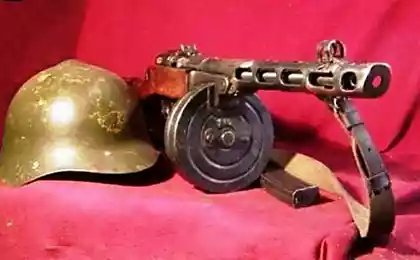1292
Armoured Vehicles of the Wehrmacht in the service of the Red Army
After the appearance of a lot of discussion threads broke out.
Continuing the theme of 59 photos + text. via 1, via 2.
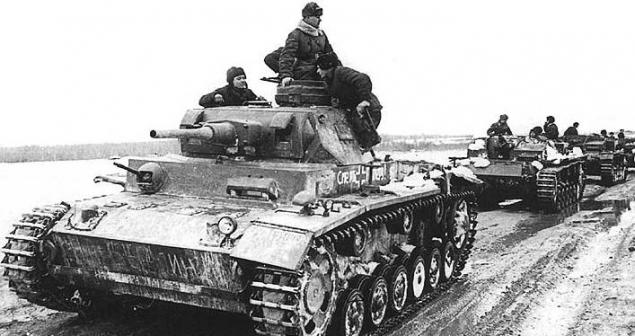
2 ...

3 ...

4 ...
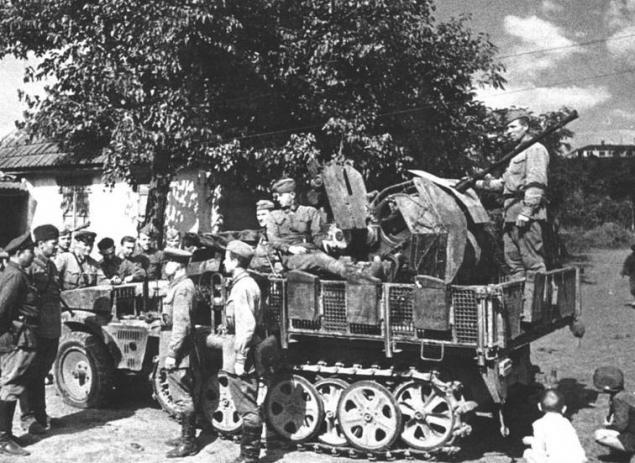
5 ...

6 ...

7 ...

8 ...
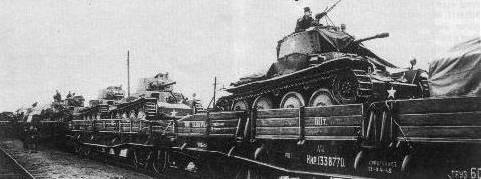
9 ...
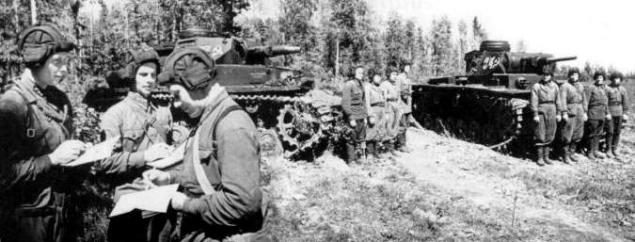
10 ...

11 ...
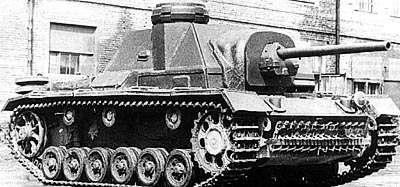
12 ...
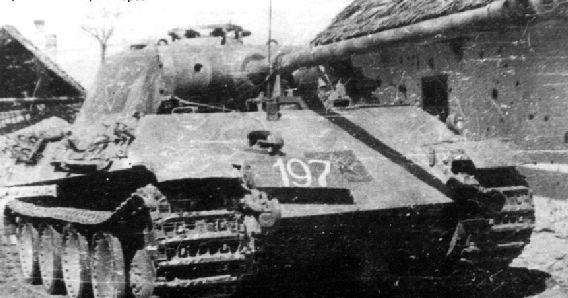
13 ...
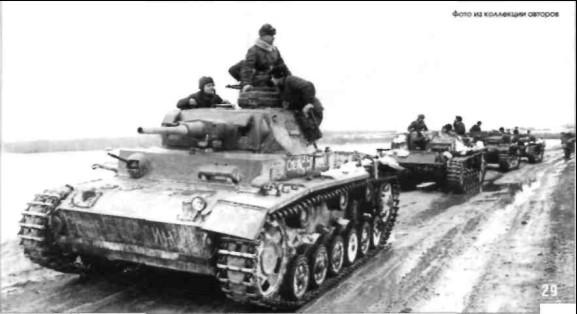
14 ...
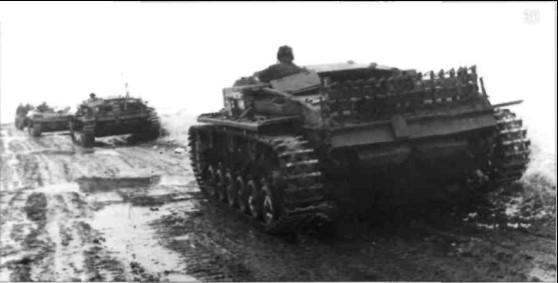
15 ...

16 ...

17 ...

18 ...

19 ...
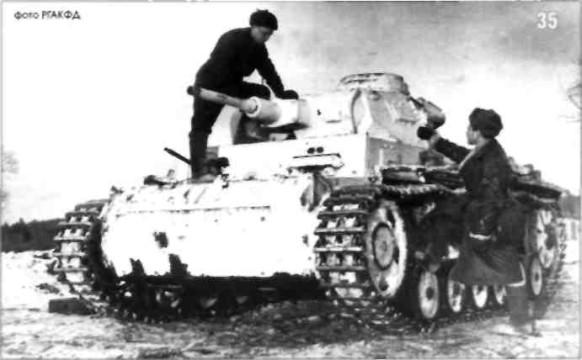
20 ...

21 ...

22 ...

23 ...

24 ...

25 ...

26 ...

27 ...

28 ...

29 ...

30 ...

31 ...

32 ...

33 ...

34 ...
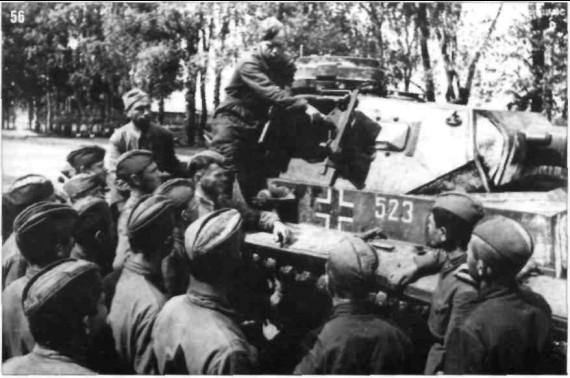
35 ...

36 ...

37 ...

38 ...

39 ...
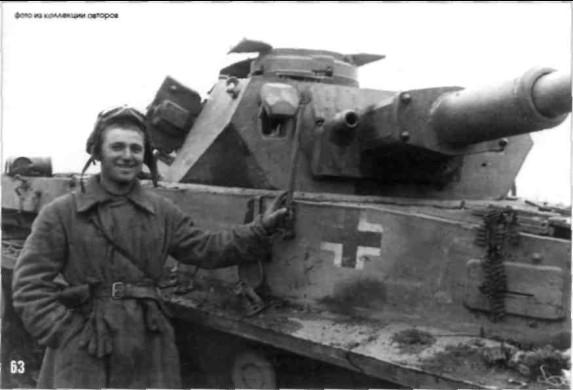
40 ...
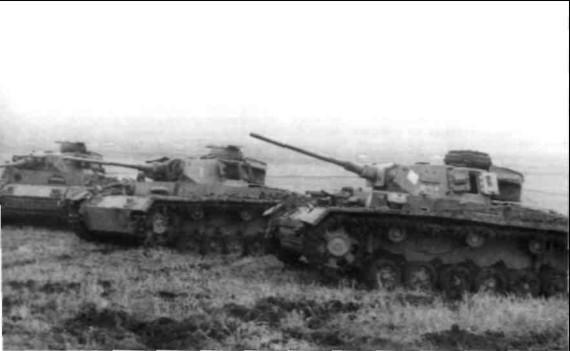
41 ...

42 ...

43 ...

44 ...

45 ...

46 ...
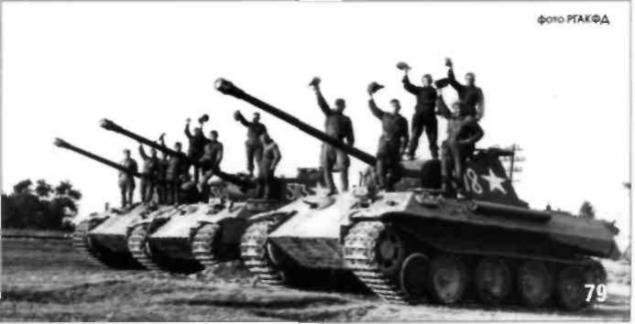
47 ...
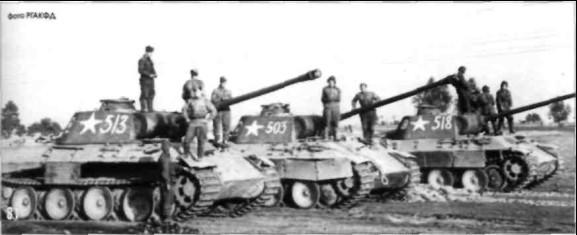
48 ...

49 ...
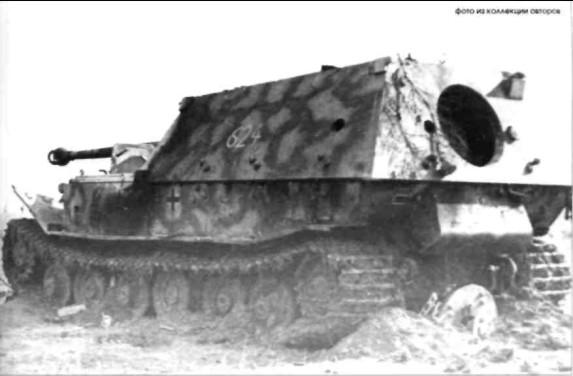
50 ...

51 ...

52 ...

53 ...

54 ...

55 ...

56 ...

57 ...

58 ...

59 ...

During the war, the Soviet army zahatila large number of enemy armored vehicles, mainly Pz.III, Pz.IV (our designation of T-3 and T-4), Pz.38 (t) (called the Prague) and a variety of self-propelled guns (called Artshturm) . Some of them were used by the Soviet parts kototorye they captured - but not for long, because of the lack of suitable ammunition, fuel and spare parts. Sometimes it creates temporary parts consisting of captured tanks. Successfully carried out sabotage operations, which used tanks to "native" German crosses. But for normal service on trophies applied to a star or a sickle with a hammer or a red flag - to prevent his firing. It is interesting that on the domestic production of tanks Soviet symbols was applied rarely, usually limited to the number of machines and parts of the code (often painted in Guards Guards still sign).
Medium tanks T-3 were loved Soviet tank commanders because of comfortable conditions for the crew, excellent optics and radio. T-5 Panther (Pz.V Panther) valued highly, manned by experienced crews, and were used mainly to fight tanks. A successful acquisition is the armored personnel carriers - because of the lack of domestic and lack of lend-lease. There are cases of using armored vehicles. The technique, inappropriate for our army altered. In the USSR, worked several factories to repair captured tanks and SU. If necessary, they are rearming and installed the Soviet engines. Examples of parts of a captured armored vehicles
Date Part Federal armored Armoured axis
June 27, 1941 8 meh.korpus? 13 Pz.III and Pz.IV (T-3 and T-4)
May 5, 1942 150 t.br. 1 kV, 7 T-34, BT-7, T-26, 18, one T-40, T-60 1 1 Pz.III (T-3)
July 25, 1942 32, etc.? 1 Pz.II (T-2), 3 StuG.III (SU-75)
Mar 1942 121 t.br.? 3 Pz.III (T-3)
14 May 1942 52 t.br. 5 KV, two T-34, T-13 60 3 M3 Stuart, Valentine 1 Pz.IV 1 (T-4)
July 5th, 1942 107 fin. m. baht. HF 1, T-2 34 1 2 BT-7 Pz.III (T-3), 1 Pz.IV (T-4), 3 StuG.III (SU-75), 1 Pz.I (T-1 )
August 1, 1942 Dep. m. baht. "B" T-9 60 12 Pz.III (T-3), 7 Pz.IV (T-4), 2 StuG, 10 Pz.38 (t)
April 1, 1943 151 t.br. 3 M3 Stuart, 25 Valentines Pz.IV 4 (T-4), 5 Pz.III (T-3), 2 Pz.II (T-2)
April 1, 1943 266 fin. m. baht.? 4 Pz.III (T-3)
May 6, 1943 62 Dep. m. baht. T-3 34 15 2 Valentines Pz.III (T-3), 1 Pz.IV (T-4)
30 May 1943 75 Dep. m. baht. 15 Valentines 9 Pz.III (T-3), 1 Pz.IV (T-4)
10 June 1943 29 m. Housing 129 T-34, 84 T-70, KV 1 1 Pz.38 (t)
July 7, 1943 244 etc. 16 Grant M3, M3 2 Stuart 9 Pz.III (T-3), 4 Pz.IV (T-4)
August 10 1943 1938 EPS 2 SU-122, SU-76 2 2 StuG.III (SU-75)
August 28, 1943 Dep. m. Bat. 44 Army 1 M3 Grant, 1 M3 Stuart 13 Pz.III (T-3) 3 Pz.IV (T-4)
September 4, 1943 1448 EPS 14 SU-76 and SU-122 1 Pz.III (T-3)
November 11th, 1943 213 t.br. T-4 34 11 Pz.IV (T-4), 35 Pz.III (T-3)
53 November 1943 Gv.t.br.? 30 armored personnel carriers
27 July 1944 28 Gv t.br. 32 T-34, 13 T-70, 4 SU-122, SU-76 4 2 Pz.VI (T-6 Tiger)
September 1, 1944 5 Ts t.br. 23 T-34 T-47 70 2 StuG.40, 1 Pz.IV (T-4)
September 10, 1944 otd.bat., 5 Ts t.br. 32 Hungarian broneedinitsy
October 30, 1944 8 Turan, 2 Toldi, 3 Zrinji, 2 Nimrod
July 16th, 1944 511, etc. 2 T-34, 17, Valentine 4 Pz.V (T-5 Panther)
March 3, 1945 SAP 991 16 SU-76 3 Pz.V (T-5 Panther)
March 7, 1945 Dep. EPS 27 army? 8 Hummel (SS-150), 6 Nashorn (SU-88)
March 12, 1945 the combined tonnes. Baht. 27 army SU-76 5 1 Wespe (SS-105), 6 StuG (SU-75)
Posted in [mergetime] 1240479961 [/ mergetime]
In 1943 it was decided to use the chassis from a large number of captured German armored vehicles for the production of self-propelled 76mm
The commander of the Su-76i SU-76i
(the troops of this technique was not yet). We called self-propelled SU-76i (And - Foreign). Modification consisted in removing the upper part of the tower and the shell (in the case of T-3 and T-4) or cutting (in case Stug III). The new fixed wheelhouse (armor: 15-25mm 35mm forehead and board and food) ustanalivali 76, 2 mm gun ZIS-5 or F-34 with ammunition 98 rounds. Crew (4 people) had 2 machine for defense and grenades. Weight self-propelled guns - about 22 tons, maximum speed - 40km / h (as in the basic tank). Issued 201 SU-76i, including 20 commanders (with commander's cupola and reduced ammunition).
In August 1943, 1902 SAP had 15 SU-76i and five Su-76. 1901 and 1903. SAP also were armed with Su-76
Peak use of captured enemy equipment accounts for 1942-1943 years. To facilitate its use in the armed forces at this time were published "Guidelines on the use of captured German combat and transport vehicles," "Guide service for the use of captured tanks PG-III» and "Management Service for the use of captured tanks« Prague ».
Depending on the number of serviceable materiel, this technique is operated as part of individual companies or battalions captured tanks created on its own initiative, and is included in the regular tank units of the Red Army. Captured tanks operated as long as enough fuel, ammunition and spare parts.
In February 1942, but the initiative of Lieutenant S.Bykova repairers 121 Tank Brigade of the Southern Front was restored captured German tank PzKpfw III. February 20, 1942, during the attack heavily fortified stronghold of the enemy near the village of Aleksandrovka crew Bykov captured tanks move ahead of the other teams of tanks. The Germans, taking it za your tank, the car missed Bykov deep into their positions. Taking advantage of it, our tanks attacked the enemy from the rear and secured the capture of the village with a minimal loss.
By the beginning of March in the 121 th Brigade repaired four German PzKpfw III. Of these five machines it was formed by tank group, which is very well operated behind enemy lines in the March battles for the village Yakovlevka and Novo - Yakovlevka. Moreover, in order to distinguish from the captured German tanks, according to the memoirs of deputy commander of the 2nd Battalion, 121 Armored Brigade N.Matvienko, "all five refurbished machines were painted a dark gray color, so they look as good as new and established signal flags" I own ". These captured tanks were used for a long time: as of May 17, 1942 (during the fighting in the Kharkov area as part of the 121st Tank Brigade had 20 T-60, T-34 six one KB and two PzKpfw III.
At the same time there was a trophy appliances and other parts of the Southwest and South fronts advancing on Kharkov, Soviet troops captured enemy equipment and immediately incorporate it into its composition. So. May 14, 1942, in the 52nd Tank Brigade chislilospyat HF. Two T-34, T-13, 60, triMZ "Stewart", one MK HI «Valentine» and one PzKpfw IV, and the 5th Guards Tank Brigade had three self-propelled guns StuG III. However, after the German counterattacks above tank formations were surrounded, from which to his May 28, 1942 came only a partial battalion of the 5th Guards Tank Brigade.
In March 1942, tanks were captured and as part of the Volkhov Front. In particular, they were armed with the third company 107 tank battalion of the 8th Army. About how the German tanks entered the service in the Red Army, he said in his blog P.Luknitsky (in 1941 - 1944 he was a special correspondent for TLS "In Leningrad and Volkhov fronts».
"At the beginning of April 1942 1st separate Mountain Brigade 80 th Infantry Division and the adjacent parts had to step on Venyagolovo. To break through the line of enemy defenses and support the infantry needed tanks. After the February battles have POGOST tanks on the local section of the front was not enough. 124th and 122nd tank brigades found ourselves short of many machines, and they could not even at full strength to provide part of the two advancing armies. 107th separate tank battalion was entirely without machines. In late March of this battalion languished tankers from enforced idleness in Olomne, next to the headquarters of the army, and felt disgusting. But where was waiting for new machines? In the second half of March Ladoga ice under the spring sun already melted and destroyed, ice track just about able to close ferry tanks from Leningrad, as it was done in the winter, now it is impossible. New tanks from factories far rear, presumably, were needed and elsewhere. With the arrival of the Germans new tanks PzKpfw V «Panther" and PzKpfw VI «Tiger" came the first reports of their use in parts of the Red Army. However, relatively few such episodes, and this is the explanation. The new German tanks were formidable, but at the same time sophisticated weapons. They could only be operated trouble-free well-trained crews with adequate repair facilities. Soviet tank crews did not have the necessary experience of operation of such complex machines - in fact structurally armored vehicles of the Red Army was much easier to the new German tanks. So often, capturing perfectly serviceable tanks our tanks broke them in the first hours of operation, and then they could not fix it because of the lack of adequate repair facilities, spare parts and repair experience of such machines. However, in some parts of the Hanka were used in the fighting.
As you know, the new German Hanka PzKpfw V «Panther" were first used in the southern fase Kursk Bulge in July 1943. And on August 5, Soviet documents notes the use of captured "Panther" during the offensive near Belgorod, but no review for combat use of the tank there.
Autumn 1943 captured one "Panther" was used briefly tank crews of the 59th separate tank regiment. According to the memoirs of veterans, "during the fighting, when our tanks were going to attack the main fire of the German artillery was based on captured" Panther ».
It should be noted that most of all in the "Panther" tank drew our weapons; ballistic data of 75-mm cannon KwK 42 Kie allowed to incite the German tanks at ranges that are not available any Soviet tank (and antitank) gun. Apparently, this was the reason for the appearance in January 1944, the order of the Main Directorate of the Red Army armored (GBTU CA) of settling serviceable trophy "Panther" in the special units of fighters tanks and using them to tank hazardous areas. At the same time issued the "Quick Guide to the use of the captured tank TV (« Panther ")." However, the "Panther" in the Red Army did not survive. For example, September 13, 1944 the commander of the 4th Panzer Army, General D.Lelyushenko reported in GBTU SC:
"I think it is currently impractical to use a summary of the captured heavy tanks like" Panther »...
These tanks are difficult to maintain and repair. Spare parts are not available, it does not allow them to carry out routine maintenance. To power the tank is necessary to provide an uninterrupted supply of aviation fuel in terms of high quality.
In addition, in the army there are big problems with the ammunition for the German 75-mm tank gun mod. 1942 (KwK 42 - Comm. Aut.). because the ammunition from the gun mod. 1940 (PAK-40 - Note. Aut.) Suitable for use in a tank "Panther". I think that for covert offensive operations more suitable is a German tank type PzKpfw IV, having a simple device, easy operation and maintenance, as well as widespread in the German army "... However, in some cases captured" Panther "acted quite successfully.
In January 1944, in the battles on the outskirts of Zhitomir, units of the 3rd Guards Tank Army had captured a significant number of damaged German tanks. By order of the deputy army commander for the technical part of Major General Yu.Soloveva 41 th and 148 th separate repair battalion was created by one platoon of the most experienced repairmen, who in a short time restored the four tanks and one PzKpfw IV PzKpfw V "Panther". A few days later, in a battle near Zherebko crew Soviet "Panther" knocked out the tank "Tiger».
Trophy "Panthers" were used in the Red Army until the end of the war, mostly sporadically and in small quantities. For example, while the reflection of the German offensive in the region of Lake Balaton in March 1945, 991 th self-propelled artillery regiment of Lieutenant Colonel Gordeev (46 Army 3rd Ukrainian Front) had a total of 16 SU-76 and 3 trophy "Panthers Apparently, the first part of the Red Army, used captured "Tigers", was the 28th Guards Tank Brigade (39th Army, Belorussian Front). December 27, 1943 during the attack, "the Tigers' 507 Battalion Sinyavka the village, one of the cars stuck in the funnel and was abandoned by the crew. Tankers 28th Guards Tank Brigade managed to get the "Tiger" and bring it to its location. The car was completely intact, and the brigade command decided to use it in battle (by this time the team had only seven T-34. Five T-70 and a SU-122). The crew of the "Tiger" consisted of six people: a tank commander - Lieutenant Guard Revyakin, a driver - Guard Petty Officer Kilevnik, gun commander - Guard Petty Officer Ilashevsky. commander of the tower - Guard Petty Officer Kodikov, gunner - Guard sergeant shark. According to documents of the brigade, "the crew for two days has mastered it. Crosses were painted over, instead of them on the tower drew two stars and wrote "Tiger". The first fight captured tanks held January 6, 1944, when together with one T-34 and one T-70 (called the "Falcon") burst into the village and Sinyavka. dig in the car for two days kept the town, making it possible to gain a foothold in our infantry made the turn.
Later. 28 th Guards Tank Brigade had captured another "Tiger" (information about where and when it happened, the authors do not have), as of July 27, 1944, she had a total 47 tanks, 32 T-34 13, T-70, 4 SU-122. 4 SU-76 and 2 PzKpfw VI «Tiger". This technique has successfully participated in "Operation Bagration", expelling Belarus from the territory of the former owners of the Soviet "Tigers". As of October 6, 1944 in the 28th Guards Tank Brigade there: T-34 tanks - 65 tanks PzKpfw VI «Tiger» - 1.
One trophy "Tiger" had a part in the composition of the 48th Army of the 1st Byelorussian Front. August 25, 1944 a member of the Military Council of the Army, Major-General Istomin reported to front headquarters: "At this time of the tanks we act only five Su-76, four ISU-122 and one captured tank" Tiger ».
But most of the captured "Tigers" were unable to get to the front line. Since August 21, 1944 in the town of grooms. The 5th Guards Tank brogada 4th Ukrainian Front repaired two "artshturma» (StuG 40) and one PzKpfw VI «Tiger". Because these machines was formed company captured tanks. According to a report the company commander, "all the machines do not have optical devices, and" artshturmy "understaffed ventilation belts." On September 7-8, the team, which had a 23 T-34, 47 T-70, 2T-34 tractor, 2StuG 40. 1 "Tiger", 4 BA-64 armored personnel carrier and 3 "scout" to march, advancing to the front line. During the march, "but technical faults were left in the village of Dolni one" artshturm "and" Tiger ". Later, "artshturm" has been renovated, and "Tiger" had to quit.
In addition to the German tanks, the Soviet troops battered car of their allies. So, in August 1944 in the area of the Stanislaus 18th Army 4th Ukrainian Front defeated two Panzer Hungarians captured a lot of different techniques. In preparation for the coming battles in the Carpathians, the army command decided to use inherited trophies. September 9, 1944 order of the number 0352 to the troops of the 18th Army, was formed "Private Army battalion captured tanks»:
"As a result of the operation Army tank fleet was enriched with captured machines requiring recovery of army repair facilities. Repair combat vehicles, mostly over, the tanks are ready to enter into operation.
Posted in [mergetime] 1240480144 [/ mergetime]
The publication has been prepared based on the book Kolomiets M. and I. Moshchanskiĭ 'Trophies in the Red Army, 1941-1945. »
Posted in [mergetime] 1240481604 [/ mergetime]
After the war with Germany, some commanders did not want to leave "with his war-horse" and decrease with the German tanks to fight against Japan. So, as part of the Trans-Baikal Front in August 1945, there were two German tanks: 1 Pz. Kpfw. II and 1 Pz. Kpfw. III. If there is interest, I can publish a selection of our technology in the service of the Wehrmacht.
Source:
Continuing the theme of 59 photos + text. via 1, via 2.

2 ...

3 ...

4 ...

5 ...

6 ...

7 ...

8 ...

9 ...

10 ...

11 ...

12 ...

13 ...

14 ...

15 ...

16 ...

17 ...

18 ...

19 ...

20 ...

21 ...

22 ...

23 ...

24 ...

25 ...

26 ...

27 ...

28 ...

29 ...

30 ...

31 ...

32 ...

33 ...

34 ...

35 ...

36 ...

37 ...

38 ...

39 ...

40 ...

41 ...

42 ...

43 ...

44 ...

45 ...

46 ...

47 ...

48 ...

49 ...

50 ...

51 ...

52 ...

53 ...

54 ...

55 ...

56 ...

57 ...

58 ...

59 ...

During the war, the Soviet army zahatila large number of enemy armored vehicles, mainly Pz.III, Pz.IV (our designation of T-3 and T-4), Pz.38 (t) (called the Prague) and a variety of self-propelled guns (called Artshturm) . Some of them were used by the Soviet parts kototorye they captured - but not for long, because of the lack of suitable ammunition, fuel and spare parts. Sometimes it creates temporary parts consisting of captured tanks. Successfully carried out sabotage operations, which used tanks to "native" German crosses. But for normal service on trophies applied to a star or a sickle with a hammer or a red flag - to prevent his firing. It is interesting that on the domestic production of tanks Soviet symbols was applied rarely, usually limited to the number of machines and parts of the code (often painted in Guards Guards still sign).
Medium tanks T-3 were loved Soviet tank commanders because of comfortable conditions for the crew, excellent optics and radio. T-5 Panther (Pz.V Panther) valued highly, manned by experienced crews, and were used mainly to fight tanks. A successful acquisition is the armored personnel carriers - because of the lack of domestic and lack of lend-lease. There are cases of using armored vehicles. The technique, inappropriate for our army altered. In the USSR, worked several factories to repair captured tanks and SU. If necessary, they are rearming and installed the Soviet engines. Examples of parts of a captured armored vehicles
Date Part Federal armored Armoured axis
June 27, 1941 8 meh.korpus? 13 Pz.III and Pz.IV (T-3 and T-4)
May 5, 1942 150 t.br. 1 kV, 7 T-34, BT-7, T-26, 18, one T-40, T-60 1 1 Pz.III (T-3)
July 25, 1942 32, etc.? 1 Pz.II (T-2), 3 StuG.III (SU-75)
Mar 1942 121 t.br.? 3 Pz.III (T-3)
14 May 1942 52 t.br. 5 KV, two T-34, T-13 60 3 M3 Stuart, Valentine 1 Pz.IV 1 (T-4)
July 5th, 1942 107 fin. m. baht. HF 1, T-2 34 1 2 BT-7 Pz.III (T-3), 1 Pz.IV (T-4), 3 StuG.III (SU-75), 1 Pz.I (T-1 )
August 1, 1942 Dep. m. baht. "B" T-9 60 12 Pz.III (T-3), 7 Pz.IV (T-4), 2 StuG, 10 Pz.38 (t)
April 1, 1943 151 t.br. 3 M3 Stuart, 25 Valentines Pz.IV 4 (T-4), 5 Pz.III (T-3), 2 Pz.II (T-2)
April 1, 1943 266 fin. m. baht.? 4 Pz.III (T-3)
May 6, 1943 62 Dep. m. baht. T-3 34 15 2 Valentines Pz.III (T-3), 1 Pz.IV (T-4)
30 May 1943 75 Dep. m. baht. 15 Valentines 9 Pz.III (T-3), 1 Pz.IV (T-4)
10 June 1943 29 m. Housing 129 T-34, 84 T-70, KV 1 1 Pz.38 (t)
July 7, 1943 244 etc. 16 Grant M3, M3 2 Stuart 9 Pz.III (T-3), 4 Pz.IV (T-4)
August 10 1943 1938 EPS 2 SU-122, SU-76 2 2 StuG.III (SU-75)
August 28, 1943 Dep. m. Bat. 44 Army 1 M3 Grant, 1 M3 Stuart 13 Pz.III (T-3) 3 Pz.IV (T-4)
September 4, 1943 1448 EPS 14 SU-76 and SU-122 1 Pz.III (T-3)
November 11th, 1943 213 t.br. T-4 34 11 Pz.IV (T-4), 35 Pz.III (T-3)
53 November 1943 Gv.t.br.? 30 armored personnel carriers
27 July 1944 28 Gv t.br. 32 T-34, 13 T-70, 4 SU-122, SU-76 4 2 Pz.VI (T-6 Tiger)
September 1, 1944 5 Ts t.br. 23 T-34 T-47 70 2 StuG.40, 1 Pz.IV (T-4)
September 10, 1944 otd.bat., 5 Ts t.br. 32 Hungarian broneedinitsy
October 30, 1944 8 Turan, 2 Toldi, 3 Zrinji, 2 Nimrod
July 16th, 1944 511, etc. 2 T-34, 17, Valentine 4 Pz.V (T-5 Panther)
March 3, 1945 SAP 991 16 SU-76 3 Pz.V (T-5 Panther)
March 7, 1945 Dep. EPS 27 army? 8 Hummel (SS-150), 6 Nashorn (SU-88)
March 12, 1945 the combined tonnes. Baht. 27 army SU-76 5 1 Wespe (SS-105), 6 StuG (SU-75)
Posted in [mergetime] 1240479961 [/ mergetime]
In 1943 it was decided to use the chassis from a large number of captured German armored vehicles for the production of self-propelled 76mm
The commander of the Su-76i SU-76i
(the troops of this technique was not yet). We called self-propelled SU-76i (And - Foreign). Modification consisted in removing the upper part of the tower and the shell (in the case of T-3 and T-4) or cutting (in case Stug III). The new fixed wheelhouse (armor: 15-25mm 35mm forehead and board and food) ustanalivali 76, 2 mm gun ZIS-5 or F-34 with ammunition 98 rounds. Crew (4 people) had 2 machine for defense and grenades. Weight self-propelled guns - about 22 tons, maximum speed - 40km / h (as in the basic tank). Issued 201 SU-76i, including 20 commanders (with commander's cupola and reduced ammunition).
In August 1943, 1902 SAP had 15 SU-76i and five Su-76. 1901 and 1903. SAP also were armed with Su-76
Peak use of captured enemy equipment accounts for 1942-1943 years. To facilitate its use in the armed forces at this time were published "Guidelines on the use of captured German combat and transport vehicles," "Guide service for the use of captured tanks PG-III» and "Management Service for the use of captured tanks« Prague ».
Depending on the number of serviceable materiel, this technique is operated as part of individual companies or battalions captured tanks created on its own initiative, and is included in the regular tank units of the Red Army. Captured tanks operated as long as enough fuel, ammunition and spare parts.
In February 1942, but the initiative of Lieutenant S.Bykova repairers 121 Tank Brigade of the Southern Front was restored captured German tank PzKpfw III. February 20, 1942, during the attack heavily fortified stronghold of the enemy near the village of Aleksandrovka crew Bykov captured tanks move ahead of the other teams of tanks. The Germans, taking it za your tank, the car missed Bykov deep into their positions. Taking advantage of it, our tanks attacked the enemy from the rear and secured the capture of the village with a minimal loss.
By the beginning of March in the 121 th Brigade repaired four German PzKpfw III. Of these five machines it was formed by tank group, which is very well operated behind enemy lines in the March battles for the village Yakovlevka and Novo - Yakovlevka. Moreover, in order to distinguish from the captured German tanks, according to the memoirs of deputy commander of the 2nd Battalion, 121 Armored Brigade N.Matvienko, "all five refurbished machines were painted a dark gray color, so they look as good as new and established signal flags" I own ". These captured tanks were used for a long time: as of May 17, 1942 (during the fighting in the Kharkov area as part of the 121st Tank Brigade had 20 T-60, T-34 six one KB and two PzKpfw III.
At the same time there was a trophy appliances and other parts of the Southwest and South fronts advancing on Kharkov, Soviet troops captured enemy equipment and immediately incorporate it into its composition. So. May 14, 1942, in the 52nd Tank Brigade chislilospyat HF. Two T-34, T-13, 60, triMZ "Stewart", one MK HI «Valentine» and one PzKpfw IV, and the 5th Guards Tank Brigade had three self-propelled guns StuG III. However, after the German counterattacks above tank formations were surrounded, from which to his May 28, 1942 came only a partial battalion of the 5th Guards Tank Brigade.
In March 1942, tanks were captured and as part of the Volkhov Front. In particular, they were armed with the third company 107 tank battalion of the 8th Army. About how the German tanks entered the service in the Red Army, he said in his blog P.Luknitsky (in 1941 - 1944 he was a special correspondent for TLS "In Leningrad and Volkhov fronts».
"At the beginning of April 1942 1st separate Mountain Brigade 80 th Infantry Division and the adjacent parts had to step on Venyagolovo. To break through the line of enemy defenses and support the infantry needed tanks. After the February battles have POGOST tanks on the local section of the front was not enough. 124th and 122nd tank brigades found ourselves short of many machines, and they could not even at full strength to provide part of the two advancing armies. 107th separate tank battalion was entirely without machines. In late March of this battalion languished tankers from enforced idleness in Olomne, next to the headquarters of the army, and felt disgusting. But where was waiting for new machines? In the second half of March Ladoga ice under the spring sun already melted and destroyed, ice track just about able to close ferry tanks from Leningrad, as it was done in the winter, now it is impossible. New tanks from factories far rear, presumably, were needed and elsewhere. With the arrival of the Germans new tanks PzKpfw V «Panther" and PzKpfw VI «Tiger" came the first reports of their use in parts of the Red Army. However, relatively few such episodes, and this is the explanation. The new German tanks were formidable, but at the same time sophisticated weapons. They could only be operated trouble-free well-trained crews with adequate repair facilities. Soviet tank crews did not have the necessary experience of operation of such complex machines - in fact structurally armored vehicles of the Red Army was much easier to the new German tanks. So often, capturing perfectly serviceable tanks our tanks broke them in the first hours of operation, and then they could not fix it because of the lack of adequate repair facilities, spare parts and repair experience of such machines. However, in some parts of the Hanka were used in the fighting.
As you know, the new German Hanka PzKpfw V «Panther" were first used in the southern fase Kursk Bulge in July 1943. And on August 5, Soviet documents notes the use of captured "Panther" during the offensive near Belgorod, but no review for combat use of the tank there.
Autumn 1943 captured one "Panther" was used briefly tank crews of the 59th separate tank regiment. According to the memoirs of veterans, "during the fighting, when our tanks were going to attack the main fire of the German artillery was based on captured" Panther ».
It should be noted that most of all in the "Panther" tank drew our weapons; ballistic data of 75-mm cannon KwK 42 Kie allowed to incite the German tanks at ranges that are not available any Soviet tank (and antitank) gun. Apparently, this was the reason for the appearance in January 1944, the order of the Main Directorate of the Red Army armored (GBTU CA) of settling serviceable trophy "Panther" in the special units of fighters tanks and using them to tank hazardous areas. At the same time issued the "Quick Guide to the use of the captured tank TV (« Panther ")." However, the "Panther" in the Red Army did not survive. For example, September 13, 1944 the commander of the 4th Panzer Army, General D.Lelyushenko reported in GBTU SC:
"I think it is currently impractical to use a summary of the captured heavy tanks like" Panther »...
These tanks are difficult to maintain and repair. Spare parts are not available, it does not allow them to carry out routine maintenance. To power the tank is necessary to provide an uninterrupted supply of aviation fuel in terms of high quality.
In addition, in the army there are big problems with the ammunition for the German 75-mm tank gun mod. 1942 (KwK 42 - Comm. Aut.). because the ammunition from the gun mod. 1940 (PAK-40 - Note. Aut.) Suitable for use in a tank "Panther". I think that for covert offensive operations more suitable is a German tank type PzKpfw IV, having a simple device, easy operation and maintenance, as well as widespread in the German army "... However, in some cases captured" Panther "acted quite successfully.
In January 1944, in the battles on the outskirts of Zhitomir, units of the 3rd Guards Tank Army had captured a significant number of damaged German tanks. By order of the deputy army commander for the technical part of Major General Yu.Soloveva 41 th and 148 th separate repair battalion was created by one platoon of the most experienced repairmen, who in a short time restored the four tanks and one PzKpfw IV PzKpfw V "Panther". A few days later, in a battle near Zherebko crew Soviet "Panther" knocked out the tank "Tiger».
Trophy "Panthers" were used in the Red Army until the end of the war, mostly sporadically and in small quantities. For example, while the reflection of the German offensive in the region of Lake Balaton in March 1945, 991 th self-propelled artillery regiment of Lieutenant Colonel Gordeev (46 Army 3rd Ukrainian Front) had a total of 16 SU-76 and 3 trophy "Panthers Apparently, the first part of the Red Army, used captured "Tigers", was the 28th Guards Tank Brigade (39th Army, Belorussian Front). December 27, 1943 during the attack, "the Tigers' 507 Battalion Sinyavka the village, one of the cars stuck in the funnel and was abandoned by the crew. Tankers 28th Guards Tank Brigade managed to get the "Tiger" and bring it to its location. The car was completely intact, and the brigade command decided to use it in battle (by this time the team had only seven T-34. Five T-70 and a SU-122). The crew of the "Tiger" consisted of six people: a tank commander - Lieutenant Guard Revyakin, a driver - Guard Petty Officer Kilevnik, gun commander - Guard Petty Officer Ilashevsky. commander of the tower - Guard Petty Officer Kodikov, gunner - Guard sergeant shark. According to documents of the brigade, "the crew for two days has mastered it. Crosses were painted over, instead of them on the tower drew two stars and wrote "Tiger". The first fight captured tanks held January 6, 1944, when together with one T-34 and one T-70 (called the "Falcon") burst into the village and Sinyavka. dig in the car for two days kept the town, making it possible to gain a foothold in our infantry made the turn.
Later. 28 th Guards Tank Brigade had captured another "Tiger" (information about where and when it happened, the authors do not have), as of July 27, 1944, she had a total 47 tanks, 32 T-34 13, T-70, 4 SU-122. 4 SU-76 and 2 PzKpfw VI «Tiger". This technique has successfully participated in "Operation Bagration", expelling Belarus from the territory of the former owners of the Soviet "Tigers". As of October 6, 1944 in the 28th Guards Tank Brigade there: T-34 tanks - 65 tanks PzKpfw VI «Tiger» - 1.
One trophy "Tiger" had a part in the composition of the 48th Army of the 1st Byelorussian Front. August 25, 1944 a member of the Military Council of the Army, Major-General Istomin reported to front headquarters: "At this time of the tanks we act only five Su-76, four ISU-122 and one captured tank" Tiger ».
But most of the captured "Tigers" were unable to get to the front line. Since August 21, 1944 in the town of grooms. The 5th Guards Tank brogada 4th Ukrainian Front repaired two "artshturma» (StuG 40) and one PzKpfw VI «Tiger". Because these machines was formed company captured tanks. According to a report the company commander, "all the machines do not have optical devices, and" artshturmy "understaffed ventilation belts." On September 7-8, the team, which had a 23 T-34, 47 T-70, 2T-34 tractor, 2StuG 40. 1 "Tiger", 4 BA-64 armored personnel carrier and 3 "scout" to march, advancing to the front line. During the march, "but technical faults were left in the village of Dolni one" artshturm "and" Tiger ". Later, "artshturm" has been renovated, and "Tiger" had to quit.
In addition to the German tanks, the Soviet troops battered car of their allies. So, in August 1944 in the area of the Stanislaus 18th Army 4th Ukrainian Front defeated two Panzer Hungarians captured a lot of different techniques. In preparation for the coming battles in the Carpathians, the army command decided to use inherited trophies. September 9, 1944 order of the number 0352 to the troops of the 18th Army, was formed "Private Army battalion captured tanks»:
"As a result of the operation Army tank fleet was enriched with captured machines requiring recovery of army repair facilities. Repair combat vehicles, mostly over, the tanks are ready to enter into operation.
Posted in [mergetime] 1240480144 [/ mergetime]
The publication has been prepared based on the book Kolomiets M. and I. Moshchanskiĭ 'Trophies in the Red Army, 1941-1945. »
Posted in [mergetime] 1240481604 [/ mergetime]
After the war with Germany, some commanders did not want to leave "with his war-horse" and decrease with the German tanks to fight against Japan. So, as part of the Trans-Baikal Front in August 1945, there were two German tanks: 1 Pz. Kpfw. II and 1 Pz. Kpfw. III. If there is interest, I can publish a selection of our technology in the service of the Wehrmacht.
Source:
